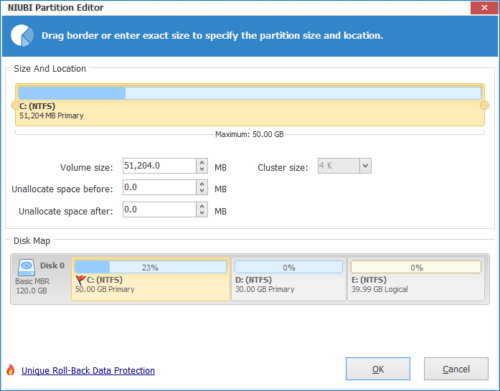How to extend system partition on Windows Server 2008 (R2)?
The most common issue on Windows Server 2008 (R2) is lacking of free disk space. After running the server for period of time, system partition is running out of space or even become full. In this situation, the fastest way is extending system partition with free space in other drives. However, most of the server administrators do not know which tool and how to extend system volume without reinstalling OS or losing data. So in this article, I’ll show you how to extend system partition in Windows Server 2008 easily and safely.
Overview:
Why extending system drive?
Windows updates, services such as backup and database, 3rd party applications, temp/cache and many other kinds of files eat up the free space in system C drive very quickly. Originally, the server administrators have to waist days to back up, recreate disk partitions and restore everything. During this period, you lost connection with all users. Luckily, new technology makes everything easier, you can extend the system drive with free space in other volumes directly nowadays.
However, to complete this task, you should have a right tool and follow the right steps.
I have a Windows 2008 Server, one disk with several partitions. I want to extend system boot volume C, after shrinking volume D and get free space in computer disk management window, when right clicking C the Extend Volume” is not active, why and now what should i do to have more free space on C?
This is typical question in many forums and blogs, some people try to extend system C partition under Disk Management console but failed. I’ll tell you why and give better tool in next paragraphs.
Which tools to extend system volume?
There are 2 main kinds of tools: Windows built-in and 3rd party. In Windows Server 2008, you can shrink and extend disk partitions with diskpart command prompt or GUI Disk Management console. The same with some other ‘semi-finished’ service from Microsoft, these tools have many limitations, but some people still like to use these built-in utilities.
I like to use 3rd-party software, because they are much powerful.
Windows built-in Diskpart command
DiskPart is a text-mode command line tool interpreter which enables storage objects such as disks, partitions or volumes configuration and management from a script, remote session, or direct input from a command prompt. DiskPart is able to shrink or extend a single disk drive. Steps to shrink and extend partition with diskpart
Windows built-in Disk Management
Command prompt is too difficult for most of people, especially for personal computer users. So Microsoft adds new Shrink Volume and Extend Volume functions under Disk Management to resize partitions (see how).
Neither diskpart nor Disk Management can help you extend the system partition by shrinking data drives, because the free space shrunk from the data drive (such as D:) is not behind system C drive, so the Extend Volume feature is greyed out and disabled. The only option to extend system volume with Windows tool is deleting the adjacent data drive.
3rd party partitioning software
With server partition software, there are no such limitations. You can expand system volume by getting free space from other volumes without deleting.
Steps to expand system partition on Windows Server 2008
Step 1: Download and install NIUBI Partition Editor, right click drive D: and click “Resize/Move Volume“.
Step 2: In the pop-up window, drag the left border rightwards to generate free Unallocated space.

Click OK and back to the main window, where 20GB Unallocated space created behind C: drive.
Step 3: Right click C drive and select “Resize/Move Volume” again, in the pop-up window, drag the right border rightwards to hold the Unallocated space.

Click OK and back to the main window, where C drive extended to 50GB by holding the 20GB free space from D. Press Apply on top left to execute, done!
If there is not enough free space in D, simply get free space from other drive in the same disk.
Watch the video to extend volumes on Server 2008
(Recommend full screen by clicking the square at bottom right of this video)
By simply clicking and dragging, you can extend Server 2008 system in short time. volume keeping everything intact. All types of hardware RAID, VMware, Hyper-V, HDD and USB media are all supported.





